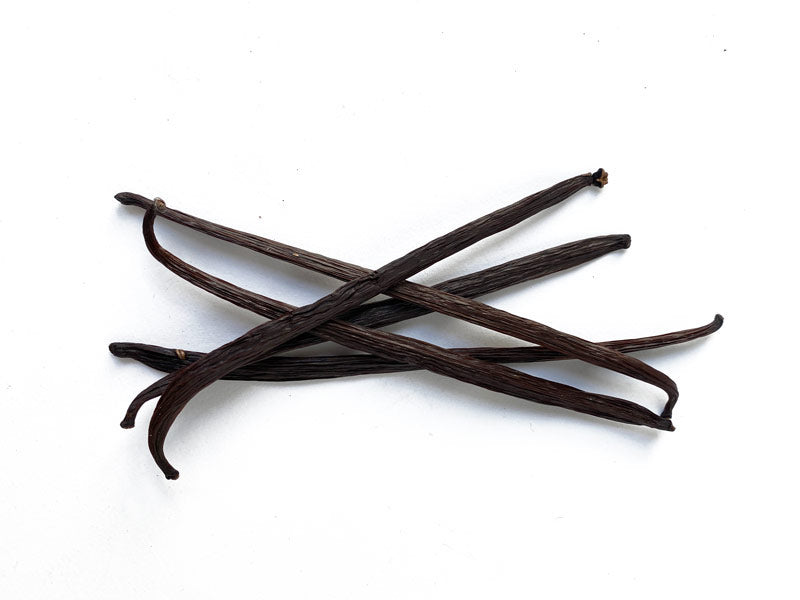
An Intro to Vanilla
Share
In the 1800s, the French developed large plantations on Reunion Island, known at the time as the Ile de Bourbon, hence the naming Madagascar Bourbon Vanilla. Madagascar vanilla is rich, dark and creamy with an overwhelming sweet, buttery aroma. These vanilla beans are well suited for baking, drinks, and desserts.
Vanilla’s leading flavor is due to the presence of vanillin, an organic compound that delivers those signature sweet, warm, and creamy flavors. Madagascar vanilla has higher concentrations of vanillin than beans from other countries, one reason why Madagascar vanilla beans are so richly flavored.
The humid, northeast corner of Madagascar, known as the Sava region, produces the majority of the world’s finest vanilla beans. The plentiful rainfall and fertile, loamy soil create optimal conditions for these delicate plants.
To use Madagascar vanilla beans, slice the bean open lengthwise with a paring knife. Use the back of the knife tip to scrape out the black inner seeds; this is what is known as vanilla caviar. You can then add the vanilla caviar to cake batter, cookie dough, frosting, sauces, syrups, and more.
Procuring Vanilla Beans:
- Plant and Pollination
Vanilla is a liana from Orchid species and flowers appear in grapes. After a rigorous selection, they are manually pollinated by hand with a needle or a tweezers. After nine months of gestation, the green vanilla bean is collected and ready for curing which lasts four to five months.
- “Killing” and Sweating
Green vanilla beans are blanched for three minutes in boiling water in order to stop the ripening process and open the cell walls to release the enzymes and vanillin. Once “killed”, vanilla beans are immediately put in big boxes stuffed with wool to avoid any heat loss. Due to sealing in the heat, an enzymatic process takes place and vanilla beans sweat. One day later, vanilla beans are more flexible and have taken on a dark color.
- Drying
Sun drying: placed in thin layers on grids or tables, vanilla beans are exposed to the sun three to five hours a day for 10 days. The beans are turned and rotated while drying to promote consistency
Shade drying: Vanilla beans are placed on grids in a well ventilated warehouse. Each day, vanilla beans are turned and inspected. Drying time can last 1 to 2 months.
- Sorting
Vanilla beans are sorted depending on color and their residual moisture level, the more a bean is, the better the quality, within the limit of the norms.
- Maturing and Sizing
After being sorted per grade, vanilla beans are stored in boxes for 2 to 3 months. During this time, aromatics will amplify and mature. Each week vanilla beans are checked in order to assess progress. Cured vanilla beans are graded and separated according to their length of beans, aroma, color, flexibility, luster, and overall health (freedom from blemishes, mildew and insect infestations). Now they are ready for export!
